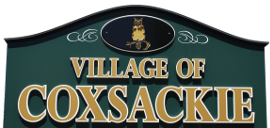In 2021, the federal Lead and Copper Rule Revisions (LCRR) went into effect. The revised rule requires every federally defined community water system to develop a lead service line inventory by October 16, 2024. The goal is to use the inventory to apply for funding and replace lead service lines in order to protect drinking water quality.If present in drinking water, elevated levels of lead can cause serious health problems, especially for pregnant women and young children. It is possible that lead levels at your home may be higher than at other homes as a result of the materials used in your home’s water pipes. The Village of Coxsackie regularly tests for lead in drinking water according to NYS Department of Health regulations. No excessive levels of lead were found in 2022 (see the Village’s 2022 Annual Water Quality Report).The Village has begun this LSL Inventory using historical construction records and Greene County Real Property data.Your help is needed in completing the Village of Coxsackie LSL Inventory.For your convenience, we have included a link to a video that shows you what to look for in your home to determine what kind of water pipe enters your home. More information is available from the NYS Department of Health webpage HERE
